The Yashica T4 and I go back a long way: right back to 1993, when I bought one in Birmingham as a quick and pocketable complement to my Pentax SLR kit. I’d looked at the Olympus XA and Mju ranges too, but the allure of the Zeiss T* lens outpulled them. The sales manager in the shop nodded approvingly at my choice: “A bit of quality,” was his opinion.
And so it proved, serving me well through the Nineties and into the new century. As I began to travel more on business, I appreciated being able to carry the camera in an inside pocket and leave my hands and shoulders free. And when parenthood arrived, a quick, easy camera that could always be close at hand got me pictures of my new family that I still treasure. It’s safe to say that it was the Yashica T4 that converted me to the benefits of a small camera, a preference that has continued well into the digital era.
My parents borrowed my T4 and liked it enough to buy one for themselves. Its quick focusing and accurate exposures must have been a revelation to them after 30 years with an Exa IIb – a truly horrible machine that I may revisit in a future article — although my mother never quite mastered the focus-and-recompose technique, which resulted in a lot of double-header portraits neatly focused on the tree in the centre-background (or, in this case, on the boat in the middle-distance.) This picture, taken in Corsica in 2000, is from a forgotten roll I found while clearing out their house. Note that my dad is modelling the suede Yashica case as well as the fetching sunhat.
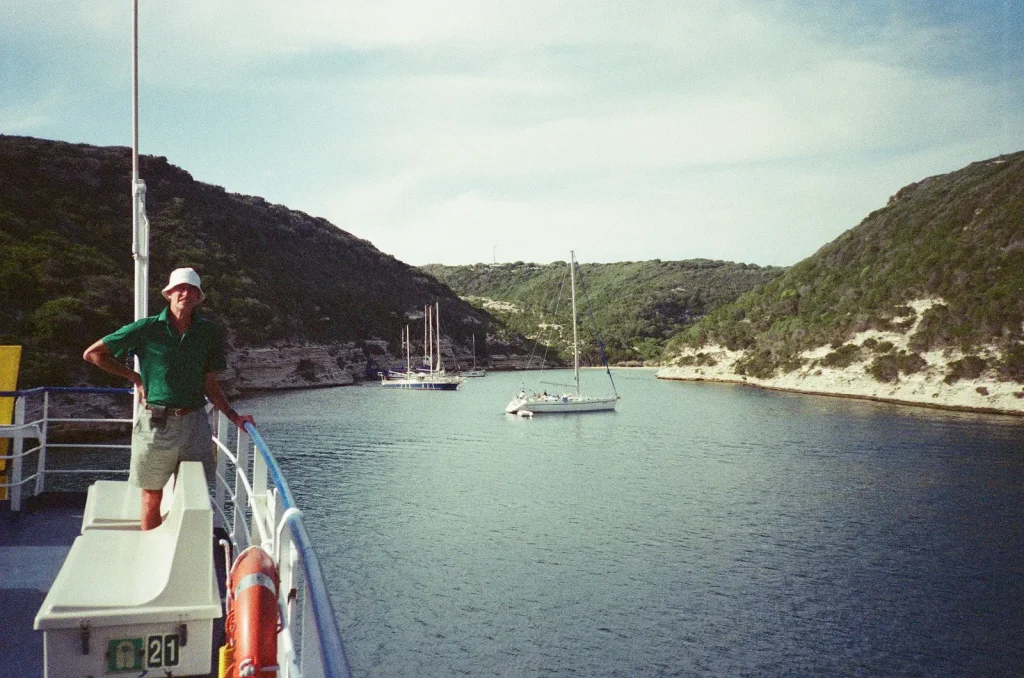
It’s the parental Yashica T4 that took the pictures here. That suede case now smells a little musty from years in a drawer after my father died and my mother’s mobility declined, but a fresh CR123 battery fired the camera up straight away. The lens cover, occasionally hesitant on this one – though never on mine — slid open and out popped the lens. The flash fired on request and the focus and winding motors made the right noises. It happily self-loaded an unexpired roll of Fujicolor C200 and went into my bag for a work trip to Prague.
I had a couple of hours to spare on my last morning but the previous day’s gorgeous winter sunshine had given way to milky grey skies and a chilly wind. Never mind, there’s plenty to enjoy in Prague even on a dull day, and I still had my 24-hour tram ticket from the night before, so off I went to the Old Town. And that’s where I decided that the T4 is no longer for me.
I find Central Europe fascinating and delightful; a region that’s happy to celebrate its position as a crossroads of civilizations is such a refreshing contrast to the isolationist, monoglot tendencies of post-2016 Britain. The colourful buildings and bright signwriting are a rich source of subject matter – with the fragrant bonus of a Christmas market – and I tried to express some of that feeling in pictures. But somehow the T4 wasn’t helping. The 35mm lens is just right for this kind of walkabout, but the viewfinder felt awkward and the release button seemed over-sensitive; I tripped the shutter too early several times while trying to lock and recompose, as I think happened in this example. (Sorry, Mum, maybe it wasn’t your fault after all.)
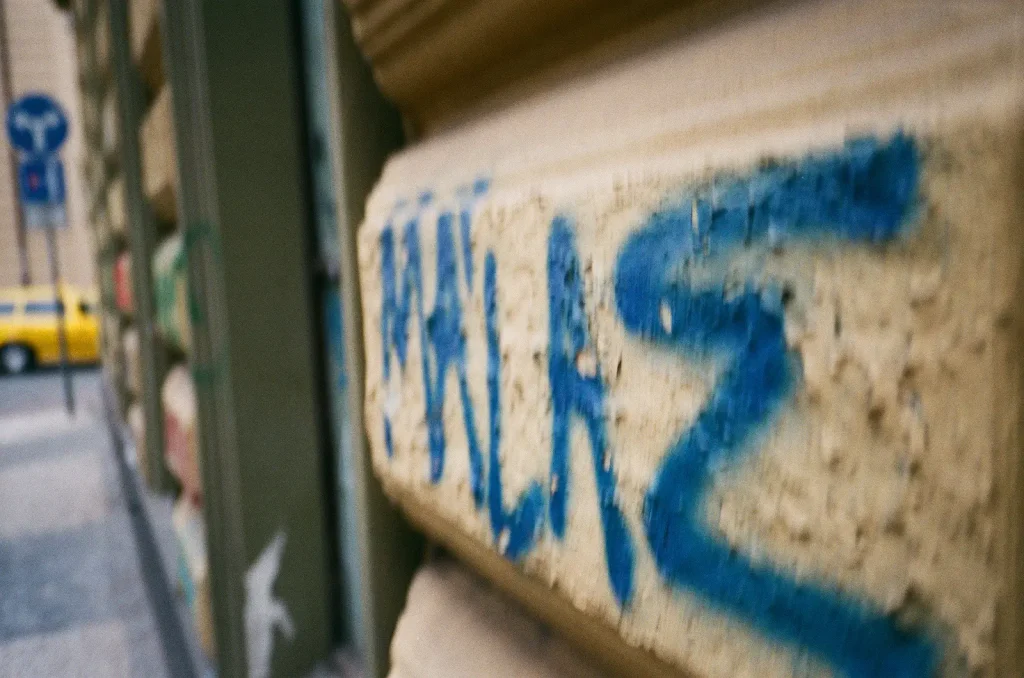
Like all the pictures here, this one is an entirely untweaked scan from the negative.
I enjoy exploring the character of a city by picking out details, and the Yashica T4 has always been good for this. The sharpness of the lens and depth-of-field characteristics of a 35mm suit my fondness for putting a foreground detail in the context of a background landmark.
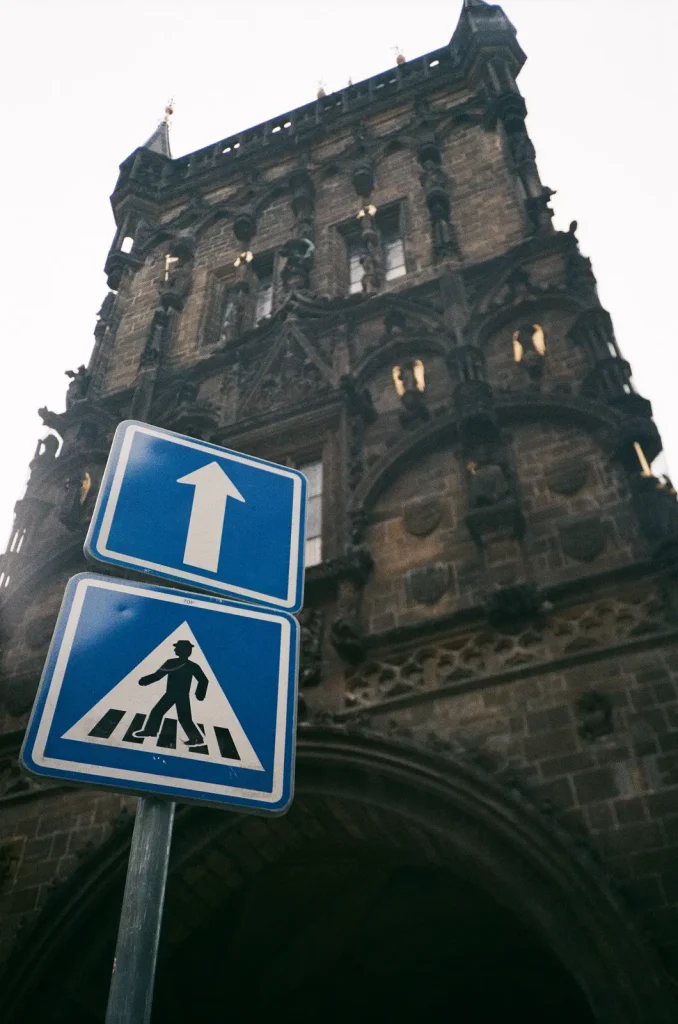
I use aperture priority where my cameras offer it, but didn’t miss it too badly here. It wasn’t the brightest day and I was using medium-speed film, so the camera’s program was presumably favouring hand-holdable shutter speeds. That, in turn, gave widish apertures and reasonable subject separation, while keeping the background recognizable. After all, not much is ever going to be far out of focus at 35mm.

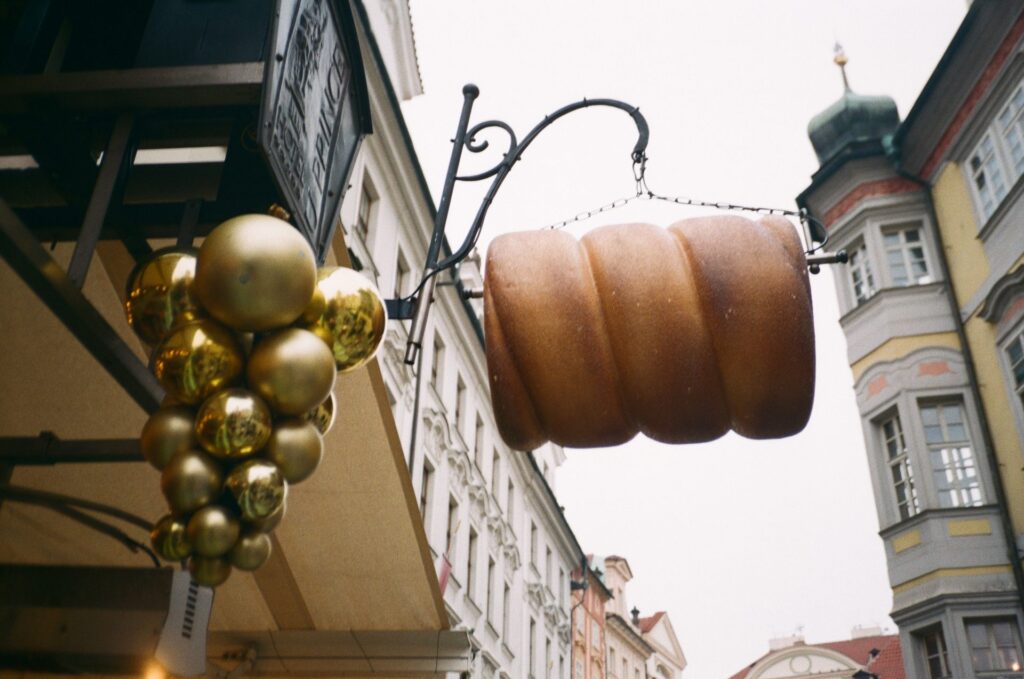
And, even on a dull day, the famous Zeiss coatings make the most of whatever colour is on offer.
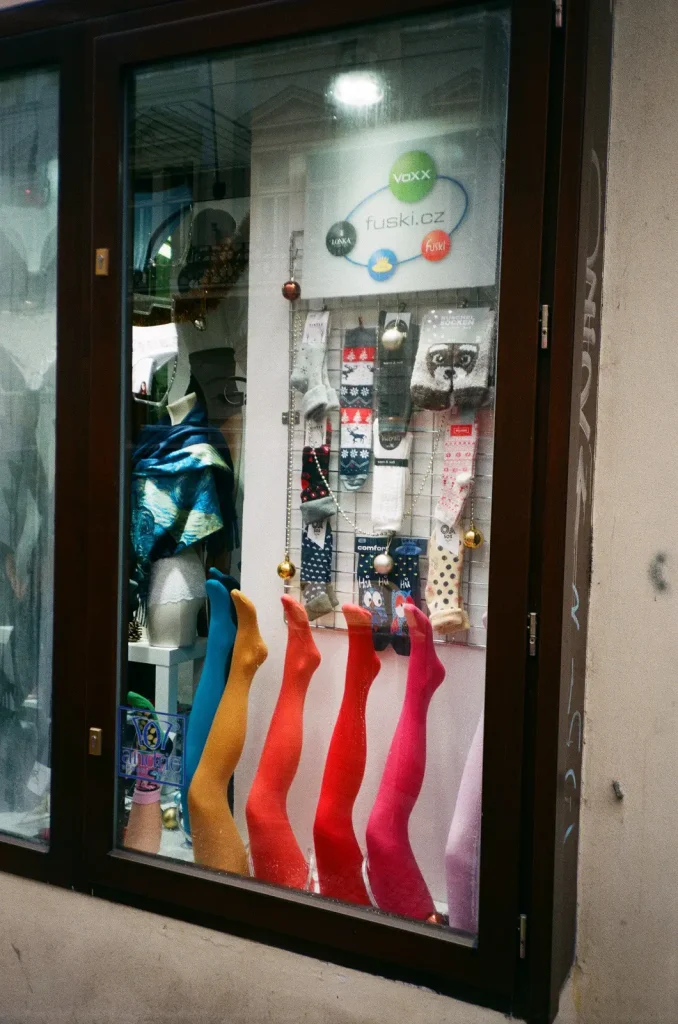
It was easy to slip the Yashica T4 into a pocket between shots, but irksome to press the control button three times when I pulled it out, just to avoid the risk of startling a passer-by with an unintended flash. And the flat front and tiny grip made it hard to be sure I wasn’t blocking the lens with the wrist cord or a finger, as has happened in the bottom right corner here.
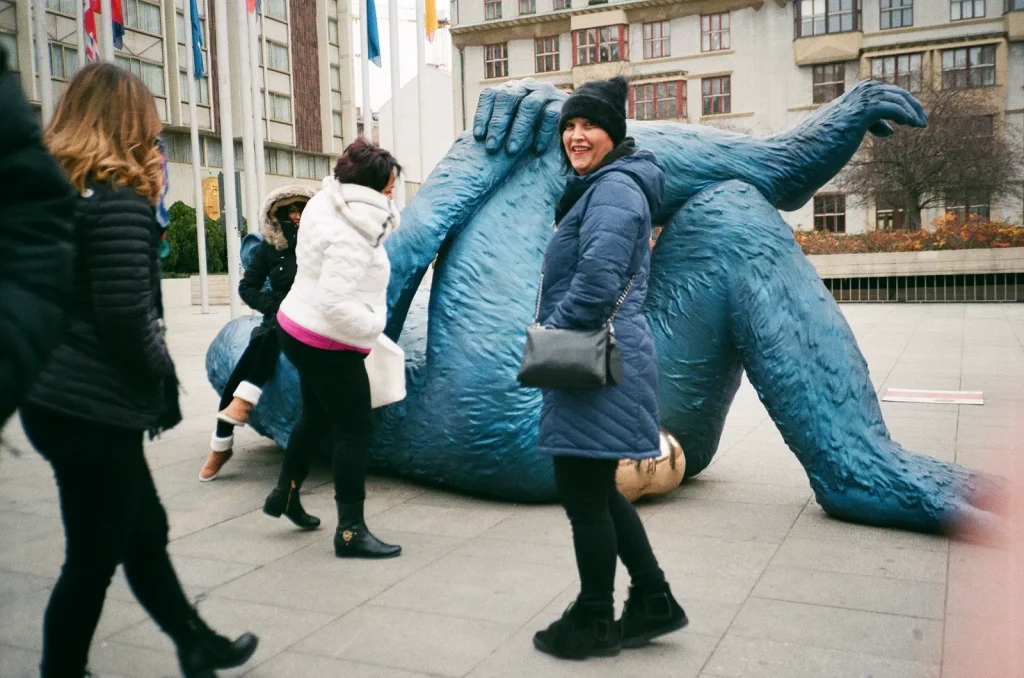
I couldn’t visit Prague in December without taking in the sights and smells of a Christmas market and, sure enough, there was one in Old Town Square. The T4 did a good job of getting the focus and exposure I wanted for this one.

That took me past the famous Astronomical Clock, where the crowd of selfie-takers had momentarily cleared and this tour guide was waiting for his party to reassemble.
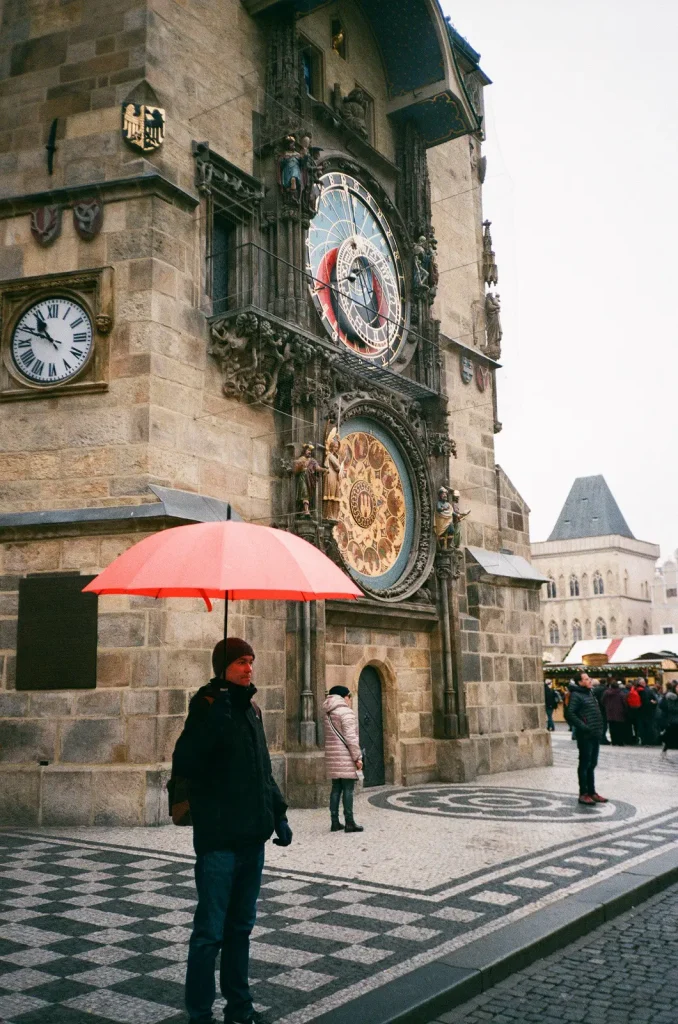
Undoubtedly, the Yashica T4 still turns out pleasing pictures; a good lens is still a good lens even after other technologies have moved on. That over-eager flash has a superbly easy and effective daylight-fill mode that made the T4 in its day great for family snaps on sunlit holidays. And, importantly, it’s still a convenient package to take along on a trip, like most of mine, whose main purpose is not photography – even if I might like it to be.
But I take pictures for pleasure, and part of that pleasure is in the process of taking them. The tactile and ergonomic satisfaction I get from my Nikon FE, or from my Fuji X digital cameras (one of which also came to Prague) simply isn’t there in the T4. And if I just want something quick and effective, I can do that more easily in – sorry – digital. At least I’ve proved that the parental camera is still in good order and has plenty of life left in it for someone who likes the pure point-and-shoot method more than I do. But I’m ready to rehome both of my T4s.
Share this post:
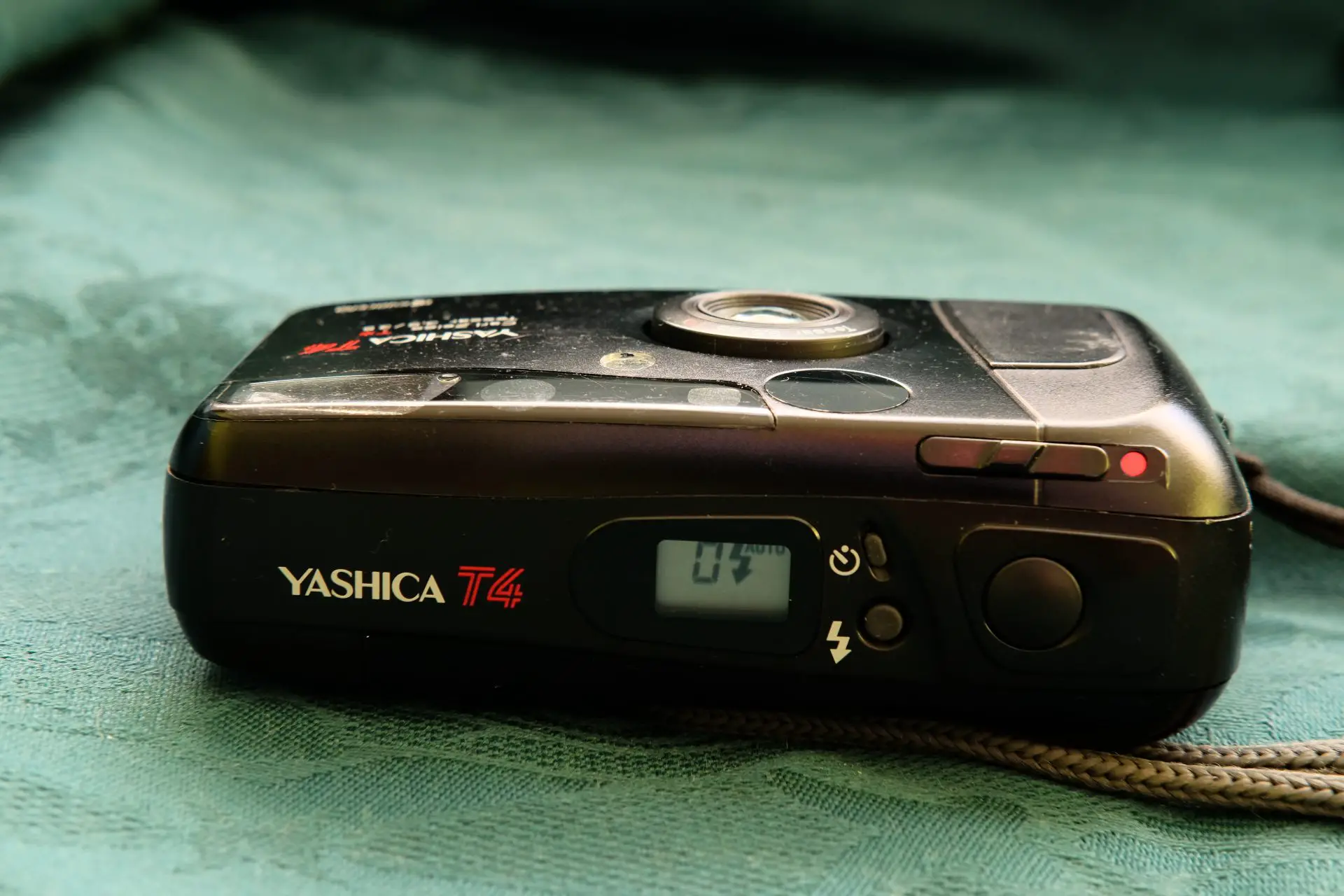








Comments
brian nicholls on Yashica T4 Review – Goodbye to an old friend – By Clive Williams
Comment posted: 22/02/2020
Comment posted: 22/02/2020
Andrew Craig on Yashica T4 Review – Goodbye to an old friend – By Clive Williams
Comment posted: 22/02/2020
I concluded exactly the same about the Yashica T2 I had bought for my mother in the '90s, and which she asked me to sell. In a few minutes of G.A.S., I thought about keeping it but sense prevailed. It is one thing to be 'limited' by a manual camera and one's ability to use it, another to be limited by the decisions an auto-point-&-shoot makes for you.
Encouraged by 35mmc, I am planning to shoot some film once more and, at the other end of the scale, have been teasing myself with Leicas and all sorts. Of course what makes most sense is to use the Nikon F3 and a couple of the lenses I already own.
Comment posted: 22/02/2020
Comment posted: 22/02/2020
Craig Schroeder on Yashica T4 Review – Goodbye to an old friend – By Clive Williams
Comment posted: 22/02/2020
Comment posted: 22/02/2020
Adrian K Cullen on Yashica T4 Review – Goodbye to an old friend – By Clive Williams
Comment posted: 23/02/2020
Comment posted: 23/02/2020
Comment posted: 23/02/2020
Comment posted: 23/02/2020
JamesP on Yashica T4 Review – Goodbye to an old friend – By Clive Williams
Comment posted: 10/08/2020
Comment posted: 10/08/2020